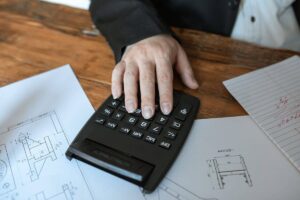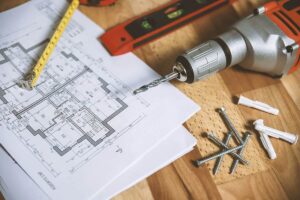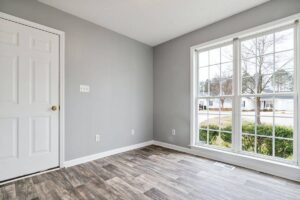Did you know that the average homeowner spends over $25,000 on kitchen cabinets, yet 67% make material choices they later regret? With so many cabinet material options available today, choosing the right one can feel overwhelming. Whether you’re planning a complete kitchen renovation or just updating your cabinets, selecting the proper material affects everything from your budget to your home’s resale value.
In Orange County’s unique climate, with its coastal humidity and temperature variations, picking the wrong cabinet material can lead to warping, cracking, and costly repairs. This comprehensive guide breaks down the 10 most popular cabinet materials, helping you make an informed decision that fits your budget, lifestyle, and California home’s specific needs.
10 Common Cabinet Materials: How To Choose Right!
Selecting the perfect cabinet material involves balancing durability, cost, appearance, and maintenance requirements. Each material serves different purposes in cabinet construction. Some work best as whole cabinet structures, while others excel as cabinet cores or decorative veneers.
Understanding these differences helps you avoid common mistakes that cost thousands in repairs or replacements. Whether you’re looking for luxury solid wood or budget-friendly alternatives, this guide covers every option available for your Orange County kitchen project.
Solid Wood: Whole Cabinet
Solid wood remains the gold standard for premium kitchen cabinets. Made entirely from natural timber, solid wood cabinets showcase the authentic grain patterns and natural beauty that homeowners love. Popular wood species include oak, maple, cherry, hickory, and walnut.
In Orange County’s Mediterranean climate, solid wood cabinets perform well when properly finished and maintained. The stable temperatures and low humidity levels create ideal conditions for wood cabinet longevity.
Quality solid wood cabinets can last 50+ years with proper care. They accept stains beautifully, allowing for custom color matching that complements your kitchen’s design. Many luxury homes throughout Orange County feature solid wood cabinetry that has maintained its beauty for decades.
Pros of Solid Wood for Kitchen Cabinets:
Exceptional Durability: Solid wood cabinets withstand decades of daily use. The natural strength of hardwood species like maple and oak provides superior structural integrity compared to engineered alternatives.
Timeless Beauty: Natural wood grain patterns create unique, irreplaceable character. Each cabinet door displays distinct markings that synthetic materials cannot replicate.
High Resale Value: Homes with solid wood cabinets typically sell for 5-10% more than those with synthetic alternatives. Potential buyers view solid wood as a premium feature worth paying extra for.
Customization Options: Wood accepts stains, paints, and finishes easily. You can achieve any color from natural honey tones to deep espresso finishes.
Repairable: Minor scratches, dents, and wear spots sand out easily. Professional refinishing can restore solid wood cabinets to like-new condition.
Environmental Benefits: Sustainably harvested wood represents a renewable resource. Solid wood cabinets also store carbon throughout their lifetime.
Cons of Solid Wood for Kitchen Cabinets:
Higher Initial Cost: Solid wood cabinets typically cost 30-50% more than engineered alternatives. Premium species like cherry or walnut command even higher prices.
Maintenance Requirements: Wood needs regular cleaning with appropriate products. Oil-based finishes require periodic reapplication to maintain protection.
Moisture Sensitivity: While Orange County’s dry climate helps, wood still reacts to humidity changes. Proper sealing around sinks and dishwashers prevents water damage.
Weight Considerations: Solid wood cabinets require robust mounting systems. Some wall structures need reinforcement to support the additional weight.
Expansion and Contraction: Natural wood movement can create minor gaps at joints during seasonal changes, though this rarely affects functionality.
Plywood: Cabinet Core
Plywood construction combines multiple thin wood layers bonded with strong adhesives. This engineered approach creates material that’s stronger than solid wood in many applications. High-quality cabinet-grade plywood uses hardwood face veneers over interior cores.
For custom kitchen cabinets in Orange County, plywood offers excellent value. The stable construction resists warping better than solid wood, while still providing natural wood appearance when veneered with attractive species.
Professional cabinet makers often prefer plywood for cabinet boxes because it holds screws securely and maintains dimensional stability over time.
Pros of Plywood for Kitchen Cabinets:
Superior Strength-to-Weight Ratio: Plywood’s cross-grain construction creates exceptional strength while remaining lighter than solid wood. This makes installation easier and reduces stress on wall mounting systems.
Dimensional Stability: The alternating grain layers resist expansion, contraction, and warping better than solid wood. This stability proves especially valuable in Orange County kitchens near coastal areas.
Holds Fasteners Well: Screws and nails grip securely in plywood’s layered construction. Cabinet hinges and drawer slides maintain tight connections over years of use.
Cost-Effective: Plywood costs significantly less than solid wood while offering comparable strength. You can achieve beautiful results without the premium solid wood price tag.
Available in Large Panels: Plywood sheets accommodate large cabinet doors and panels without joints. This creates cleaner lines and reduces weak points.
Accepts Finishes Well: Quality plywood takes stains, paints, and veneers beautifully. The smooth surface provides an excellent foundation for any finish treatment.
Cons of Plywood for Kitchen Cabinets:
Edge Treatment Required: Plywood edges show the layered construction and require covering with edge banding or solid wood strips for finished appearance.
Quality Variations: Lower-grade plywood may contain voids, patches, or inconsistent layers that affect strength and appearance. Always specify cabinet-grade plywood for kitchen projects.
Moisture Vulnerability: While more stable than solid wood, plywood can still delaminate if exposed to excessive moisture. Proper sealing remains important around sinks and appliances.
Limited Repair Options: Damaged plywood sections often require complete replacement rather than simple repairs like solid wood allows.
Potential Formaldehyde Concerns: Some plywood products contain formaldehyde-based adhesives. Look for formaldehyde-free options if indoor air quality concerns you.
Particleboard: Cabinet Core
Particleboard consists of wood chips, sawdust, and other wood particles bonded together with resin under heat and pressure. This manufactured material provides an economical foundation for laminated or veneered cabinet doors and boxes.
While not as strong as plywood or solid wood, quality particleboard serves well in many cabinet applications. Its smooth, uniform surface provides an excellent base for laminates and veneers.
Modern particleboard manufacturing has improved significantly, with better adhesives and more consistent density creating stronger, more reliable products than older versions.
Pros of Particleboard for Kitchen Cabinets:
Most Affordable Option: Particleboard costs considerably less than other cabinet materials. This makes kitchen renovations accessible for homeowners with limited budgets.
Smooth, Uniform Surface: The manufacturing process creates perfectly flat surfaces ideal for laminate application. There are no grain patterns or irregularities to show through thin veneers.
Environmentally Friendly: Particleboard utilizes wood waste products that would otherwise be discarded. This recycling approach reduces forest waste and provides value from wood scraps.
Easy to Machine: The uniform density allows precise cutting, drilling, and routing. Cabinet makers can create intricate profiles and details easily.
Lightweight: Particleboard weighs less than solid wood or plywood, simplifying transportation and installation. Wall mounting systems face less stress.
Takes Laminates Well: The smooth surface bonds perfectly with plastic laminates, creating durable, easy-to-clean surfaces ideal for busy kitchens.
H3: Cons of Particleboard for Kitchen Cabinets:
Limited Durability: Particleboard lacks the structural strength of solid wood or plywood. Heavy loads can cause sagging or failure over time.
Moisture Sensitivity: Water exposure causes particleboard to swell and crumble. Even small leaks around sinks can destroy particleboard cabinets.
Poor Screw Holding: The loose particle structure doesn’t grip screws securely. Hardware may work loose over time, especially with frequent use.
Difficult Repairs: Damaged particleboard rarely repairs successfully. Water damage, chips, or cracks typically require complete panel replacement.
Potential Health Concerns: Some particleboard contains formaldehyde-based resins that can off-gas. Choose low-emission or formaldehyde-free products for better indoor air quality.
Lower Resale Value: Homes with particleboard cabinets typically don’t command premium prices. Buyers often view particleboard as a budget compromise.
Melamine Wood: Veneer
Melamine consists of decorative paper soaked in melamine resin, then applied to substrate materials under heat and pressure. This creates a hard, durable surface that resists moisture, stains, and normal wear.
For Orange County homeowners seeking low-maintenance options, melamine offers practical benefits. The smooth surface cleans easily with standard household products, making it ideal for busy family kitchens.
Modern melamine comes in hundreds of colors and patterns, including realistic wood grains that closely mimic natural lumber appearance.
Pros of Melamine Wood for Kitchen Cabinets:
Exceptional Durability: The melamine surface resists scratches, impacts, and daily wear better than many natural materials. Properly made melamine cabinets maintain their appearance for decades.
Water and Stain Resistance: The non-porous surface repels liquids and prevents staining. Spills wipe away easily without penetrating the material.
Low Maintenance: Melamine requires only routine cleaning with mild soap and water. No special treatments, oils, or refinishing necessary.
Wide Design Options: Available in countless colors, patterns, and textures. You can achieve any look from solid colors to realistic wood grains.
Budget-Friendly: Melamine costs significantly less than solid wood while providing superior durability in many applications.
Consistent Appearance: Unlike natural wood, melamine provides uniform color and pattern across all cabinet surfaces. No variation or matching concerns.
Cons of Melamine Wood for Kitchen Cabinets:
Repair Limitations: Chips, scratches, or damage to the melamine surface cannot be repaired. Damaged sections require complete replacement.
Heat Sensitivity: Excessive heat can damage or discolor melamine surfaces. Hot pots, pans, or appliances placed directly on melamine can cause permanent damage.
Edge Banding Requirements: Raw substrate edges need covering with matching edge banding. Poor edge banding application can peel or chip over time.
Limited Refinishing Options: You cannot sand, stain, or paint melamine surfaces. The original finish must last the cabinet’s lifetime.
Potential Substrate Issues: The underlying particleboard or MDF substrate still has moisture sensitivity and structural limitations that affect overall cabinet performance.
Natural Wood Veneer: Veneer
Wood veneer consists of thin slices of real wood applied over substrate materials like plywood, MDF, or particleboard. This technique provides natural wood beauty at a fraction of solid wood’s cost.
Quality veneer work creates cabinets virtually indistinguishable from solid wood construction. The thin wood layer shows authentic grain patterns and accepts stains just like solid lumber.
For kitchen cabinets in orange county, veneer offers an excellent compromise between beauty and budget. You get the prestige of real wood without the premium solid wood price.
Pros of Wood Veneer for Kitchen Cabinets
Authentic Wood Appearance: Real wood veneer displays genuine grain patterns and natural character. Each cabinet shows unique wood markings that synthetic materials cannot replicate.
Cost Savings: Veneer construction costs 40-60% less than solid wood while providing similar appearance. This makes premium wood species accessible to more homeowners.
Structural Advantages: The stable substrate core resists warping and movement better than solid wood. Veneer cabinets maintain straight lines and proper door alignment longer.
Stain Acceptance: Wood veneer accepts stains and finishes just like solid wood. You can achieve custom colors and sheens to match your kitchen design perfectly.
Environmental Benefits: Veneer maximizes wood utilization, creating multiple cabinet sets from single logs. This efficient use reduces waste and forest impact.
Repair Possibilities: Minor veneer damage can often be patched or spot-refinished without replacing entire panels.
Cons of Wood Veneer for Kitchen Cabinets
Veneer Thickness Limitations: Thin veneer layers can sand through during refinishing attempts. Deep scratches or damage may expose the substrate underneath.
Edge Treatment Complexity: Veneer edges require careful treatment with solid wood strips or thick veneer to hide substrate materials and create finished appearance.
Moisture Sensitivity: While the substrate may resist moisture well, the wood veneer itself can still be damaged by water exposure, especially around sink areas.
Professional Installation Required: Quality veneer work requires skilled craftsmen. Poor application can result in bubbles, peeling, or misaligned grain patterns.
Substrate Dependency: The overall cabinet quality depends heavily on the substrate material. Poor substrate choices can undermine even excellent veneer work.
Laminate: Veneer
Laminate consists of decorative paper bonded to kraft paper layers, then sealed with protective resins. This creates an extremely durable surface that withstands heavy use while maintaining its appearance.
Modern high-pressure laminates offer incredible realism, including wood grains, stone patterns, and solid colors. The manufacturing quality has improved dramatically, making today’s laminates nearly indistinguishable from natural materials.
For custom kitchen cabinets orange county homeowners appreciate laminate’s combination of durability, appearance options, and reasonable cost.
Pros of Laminate for Cabinets
Exceptional Durability: High-pressure laminate resists impacts, scratches, heat, and moisture better than most natural materials. Quality laminate maintains its appearance through decades of heavy use.
Easy Maintenance: The smooth, non-porous surface cleans easily with standard household products. No special cleaners, oils, or treatments required.
Design Versatility: Available in thousands of colors, patterns, and textures. Realistic wood grains, stone looks, and solid colors provide unlimited design possibilities.
Cost Effectiveness: Laminate provides premium appearance at moderate cost. You can achieve high-end looks without luxury material prices.
Consistent Quality: Every square foot of laminate looks identical, eliminating color matching or grain pattern concerns that affect natural materials.
Chemical Resistance: Laminate resists common household chemicals, grease, and stains that might damage other materials.
Cons of Laminate for Cabinets
Repair Difficulties: Chips, burns, or deep scratches in laminate cannot be repaired. Damaged sections require complete replacement, which can be challenging to match.
Edge Vulnerability: Laminate edges can chip or peel, especially around high-use areas like door handles. Quality edge banding and careful installation help prevent problems.
Heat Limitations: While heat-resistant, extremely hot items can damage laminate surfaces. Trivets and protective measures remain necessary around cooking areas.
Perception Issues: Some buyers still view laminate as a budget compromise, potentially affecting home resale values despite quality improvements.
Substrate Dependency: Laminate performance depends entirely on the substrate quality. Poor substrate materials can cause premature failure even with excellent laminate surfaces.
Thermofoil: Veneer
Thermofoil consists of vinyl film heat-formed over MDF or particleboard substrates. The heating process creates seamless coverage around raised panels and detailed profiles, providing smooth, easy-to-clean surfaces.
This manufacturing technique allows complex door styles impossible with other materials. The vinyl conforms perfectly to routed details, creating one-piece construction without joints or seams.
Thermofoil cabinets offer excellent value for homeowners wanting painted cabinet appearance without actual paint maintenance requirements.
Pros of Thermofoil for Kitchen Cabinets
Seamless Coverage: The heat-forming process creates perfect coverage around raised panels and decorative details. No brush marks, grain show-through, or finish inconsistencies.
Low Maintenance: The vinyl surface cleans easily with soap and water. No repainting, touch-ups, or special treatments required to maintain appearance.
Moisture Resistance: The sealed vinyl surface repels water and humidity better than painted wood. Ideal for areas around sinks and dishwashers.
Cost Effective: Thermofoil provides painted cabinet appearance at significantly lower cost than actual painted wood construction.
Consistent Finish: Every cabinet surface shows identical color and sheen. No color variation or matching concerns between different pieces.
Design Options: Available in numerous colors and can accommodate complex door profiles and details.
Cons of Thermofoil for Kitchen Cabinets
Heat Sensitivity: Excessive heat causes thermofoil to bubble, peel, or discolor. Keep hot appliances and cookware away from thermofoil surfaces.
Repair Impossibility: Damaged thermofoil cannot be repaired. Peeling, bubbling, or damage requires complete door or panel replacement.
Sharp Edge Vulnerability: Thermofoil can lift or peel at sharp edges or corners, especially with heavy use or impact.
Limited Refinishing: You cannot paint, stain, or change thermofoil finishes. The original appearance must last the cabinet’s lifetime.
Substrate Limitations: The underlying MDF or particleboard substrate still has structural and moisture limitations that affect overall cabinet performance.
MDF – Medium-Density Fiberboard: Cabinet Core
MDF consists of fine wood fibers bonded with synthetic resin under heat and pressure. The manufacturing process creates exceptionally smooth, uniform surfaces ideal for painted finishes.
Unlike particleboard, MDF uses fine fibers rather than large particles, resulting in stronger, more consistent material. The smooth surface eliminates grain patterns that might show through paint or thin laminates.
Many professional cabinet makers prefer MDF for painted cabinet doors because it provides flawless paint finishes impossible to achieve with natural wood.
Pros of MDF Kitchen Cabinets
Perfect Paint Surface: The ultra-smooth surface eliminates grain patterns and imperfections that show through paint. MDF creates flawless painted finishes that rival furniture quality.
Dimensional Stability: MDF doesn’t expand, contract, or warp like natural wood. Cabinet doors stay straight and true over time.
Easy Machining: The uniform density allows precise cutting, routing, and drilling. Complex profiles and details machine cleanly without tear-out.
Cost Effective: MDF costs significantly less than solid wood while providing superior paint finishes. Excellent value for painted cabinet projects.
Consistent Density: Unlike plywood or particleboard, MDF has uniform density throughout. No voids, soft spots, or inconsistencies affect strength or appearance.
Versatile Applications: Works well for cabinet doors, face frames, and interior components. Accepts hinges and hardware securely.
Cons of MDF Kitchen Cabinets
Moisture Sensitivity: Water causes MDF to swell and deteriorate rapidly. Even minor moisture exposure can cause permanent damage.
Weight Considerations: MDF weighs significantly more than plywood or particleboard. Heavy cabinet doors may require upgraded hinges and mounting systems.
Dust Production: Cutting or sanding MDF creates fine dust that requires proper protective equipment and ventilation during fabrication.
Limited Fastener Holding: While better than particleboard, MDF doesn’t hold screws as securely as plywood or solid wood. Hardware may loosen over time.
Formaldehyde Concerns: Traditional MDF contains urea-formaldehyde resins that can off-gas. Choose low-emission or formaldehyde-free options for better indoor air quality.
HDF – High-Density Fiberboard: Cabinet Core
HDF represents the premium version of fiberboard products, with higher density and strength than standard MDF. The manufacturing process compresses wood fibers to extreme density, creating exceptionally strong, smooth material.
This engineered product excels in applications requiring dimensional stability and smooth surfaces. HDF’s consistent density and fine texture make it ideal for detailed cabinet work.
Professional cabinet shops often choose HDF for high-end projects where dimensional accuracy and surface quality are critical.
Pros of HDF Kitchen Cabinets:
Superior Strength: The high-density construction provides exceptional strength-to-weight ratio. HDF cabinets support heavy loads without sagging or failure.
Dimensional Stability: HDF remains straight and true under varying humidity and temperature conditions. Cabinet doors maintain perfect alignment over time.
Excellent Machining Properties: The uniform, fine texture allows precise cutting and routing. Complex details and profiles machine cleanly without chipping.
Perfect Paint Base: The ultra-smooth surface provides ideal foundation for paint finishes. No grain pattern or texture shows through thin coats.
Moisture Resistance: While not waterproof, HDF handles moderate moisture better than MDF or particleboard. Less prone to swelling from humidity changes.
Screw Holding: The dense structure grips screws more securely than standard MDF, providing better hardware attachment.
Cons of HDF Kitchen Cabinets:
Higher Cost: HDF costs more than MDF or particleboard, though still less than plywood or solid wood. The premium performance comes with premium pricing.
Water Damage Risk: Despite better moisture resistance, water exposure still damages HDF. Proper sealing around sinks and appliances remains essential.
Weight Concerns: The high density makes HDF quite heavy. Cabinet mounting systems and hinges must accommodate the additional weight.
Limited Availability: Not all lumber yards stock HDF regularly. Special ordering may be required, potentially affecting project timelines.
Tool Wear: The hard, dense material dulls cutting tools faster than softer materials. Higher tool maintenance costs for fabricators.
Stainless Steel: Whole Cabinet
Stainless steel cabinets bring commercial kitchen durability to residential spaces. Made from chromium-steel alloys, these cabinets resist corrosion, heat, and bacteria growth while providing easy cleaning and maintenance.
Originally developed for restaurant and commercial kitchens, stainless steel cabinets increasingly appear in high-end residential projects. The material’s inherent properties make it ideal for serious cooking enthusiasts.
In Orange County’s coastal environment, stainless steel’s corrosion resistance provides significant advantages over materials that might be affected by salt air.
Making Your Final Decision
The best cabinet material balances your priorities among cost, appearance, durability, and maintenance requirements. No single material excels in every category, so understanding your specific needs guides the right choice.
Consider visiting showrooms to see and touch different materials firsthand. What looks good in photos may feel different in person. Pay attention to edge details, hardware mounting, and finish quality differences between options.
Most importantly, work with experienced professionals who can guide material selection based on your specific situation, local conditions, and long-term goals for your Orange County kitchen.
Whether you choose budget-friendly particleboard or premium solid wood, proper material selection and installation create kitchens that serve your family beautifully for decades to come.
Frequently Asked Questions About Kitchen Cabinet Materials
Q: What’s the most durable cabinet material for busy families?
A: Solid wood and high-quality plywood offer the best long-term durability. For easier maintenance, consider laminate or melamine surfaces that resist stains and scratches while requiring minimal upkeep.
Q: Which cabinet material provides the best value for money?
A: Plywood with quality veneer offers excellent value, providing natural wood appearance at moderate cost with superior structural performance. It balances durability, appearance, and price effectively.
Q: Do cabinet materials affect home resale value in Orange County?
A: Yes, significantly. Solid wood cabinets typically add 5-10% to home values, while quality plywood with veneer performs nearly as well. Laminate and particleboard options may not contribute to premium pricing.
Q: What cabinet material works best in Orange County’s coastal areas?
A: Stainless steel offers ultimate corrosion resistance, while marine-grade plywood and properly sealed solid wood also perform well. Avoid particleboard near coastal areas due to moisture sensitivity.
Q: Can I mix different cabinet materials in one kitchen? A: Absolutely. Many designers use solid wood for visible areas like islands and upper cabinets, with plywood or MDF for interior components and less visible areas. This approach balances cost and appearance.
Q: How long do different cabinet materials typically last? A: Solid wood: 50+ years, Quality plywood: 30-40 years, MDF/HDF: 20-30 years, Laminate: 15-25 years, Particleboard: 10-15 years. Proper installation and maintenance significantly affect longevity.
Q: Which materials work best for painted cabinet finishes? A: MDF provides the smoothest painted finish, followed by HDF and quality plywood. These materials don’t have grain patterns that show through paint, creating professional-quality results.
Q: Are there health concerns with certain cabinet materials? A: Some particleboard, MDF, and plywood products contain formaldehyde-based adhesives. Look for formaldehyde-free or low-emission products certified by GREENGUARD or similar organizations for better indoor air quality.
Q: What’s the difference between veneer and laminate? A: Veneer consists of thin real wood slices applied to substrates, while laminate uses decorative papers with resin coatings. Veneer offers authentic wood appearance but costs more than laminate alternatives.
Q: Should I choose pre-made or custom cabinets for material quality? A: Custom cabinets typically use higher-quality materials and construction methods. You can specify exact materials, construction details, and finishing processes to match your preferences and budget exactly.

